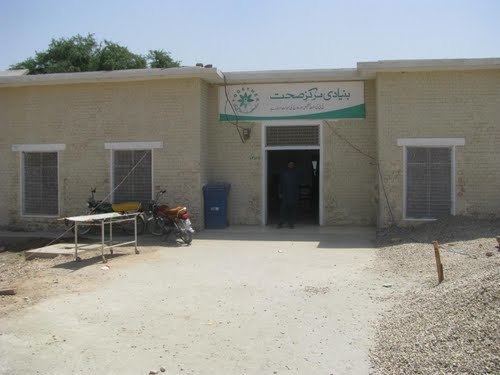Region Balochistan Time zone PST (UTC+5) | ||
 | ||
Musakhel (Urdu: موسىٰ خيل), all hilly and green, is hard to be traced in the historical descriptions as there is no isolated account of the area available. However, by studying the history of Kandahár and northern Balochistan little can be ascertained about Musakhel. According to the early history, this area, being a part of Kandahár province, has been ruled by the Ghaznavids, Maliks of Kurat Dynasty, Amir Timur and his successors (1383-1470 AD), Sultan Husain Mirza of Herát (1470-1480 AD), and Amir Shuja-ud-Din Zunnún (1480-1504). In 1505 AD, the Mughals conquered the province of Kandahár and held it till 1559 AD when the Safavid Kings of Persia acquired it. The Mughals regained the province in 1595 AD but lost it again in 1622 AD, to the Safavid Kings of Persia. This time, the Safavids, conferred the government of Pishin and its tribal dependencies upon Sher Khan Tarin. He, after 7 years, refused to submit to the governor of Kandahár and became semi-independent, but had to retreat later on. In 1709 AD, the Afghan inhabitants rose under Mir Wais Ghilzai and established the Ghilzai power in Kandahár. The Ghilzai power was terminated by Nadir Shah in 1737 AD. After the assassination of Nadir Shah in 1747 AD, the first democratic government was established in Kandahár by the Afghans as they elected Ahmed Shah Durrani as their ruler. In 1826, the first Amir of Afghanistan, Dost Muhammad Barakzai, took hold of the area and annexed it to Afghanistan.
Map of Musa Khel, Pakistan
After the first phase of the Afghan war of 1878-79 AD, the British took control of the northern areas of Balochistan under the Treaty of Gandamak. During 1879-84 AD, efforts were made to extend the British influence over the Khetrans and Musakhels of the, now Musakhel, territory. The Musakhels took part in outrages committed by the Kakars under Shah Jahan in 1884, but surrendered to the British government on the conclusion of the expedition in the same year. On 1st November 1887, the whole area was declared part of British India. Zhob agency was formed in 1890 and Musakhel territory was annexed to it. Musakhel was made a tehsil in 1892 and was transferred to Loralai district in October 1903.
In 1905, the Musakhel tehsil comprised 61 villages and the total population, according to 1901 census, was 15,537 (8,374 males and 7,163 females). The principal tribes represented were: Isot Afghans (1,941); Jafar Afghans (1,026); Panri Afghans (10,144) including the Musakhel clan (9,748) the principal divisions of which were the Belkhel (7,662) and Laharzai (2,086); and Saiads (271).
The chief languages spoken was Pushto and Seraiki. Musakhel remained a tehsil of Loralai district till 1st January 1992 when it was notified as a district as a result of splitting Loralai district into 3 districts, Loralai, Musakhel, and Barkhan. Although Musakhel is an old human settlement there is no remarkable archaeological site.
